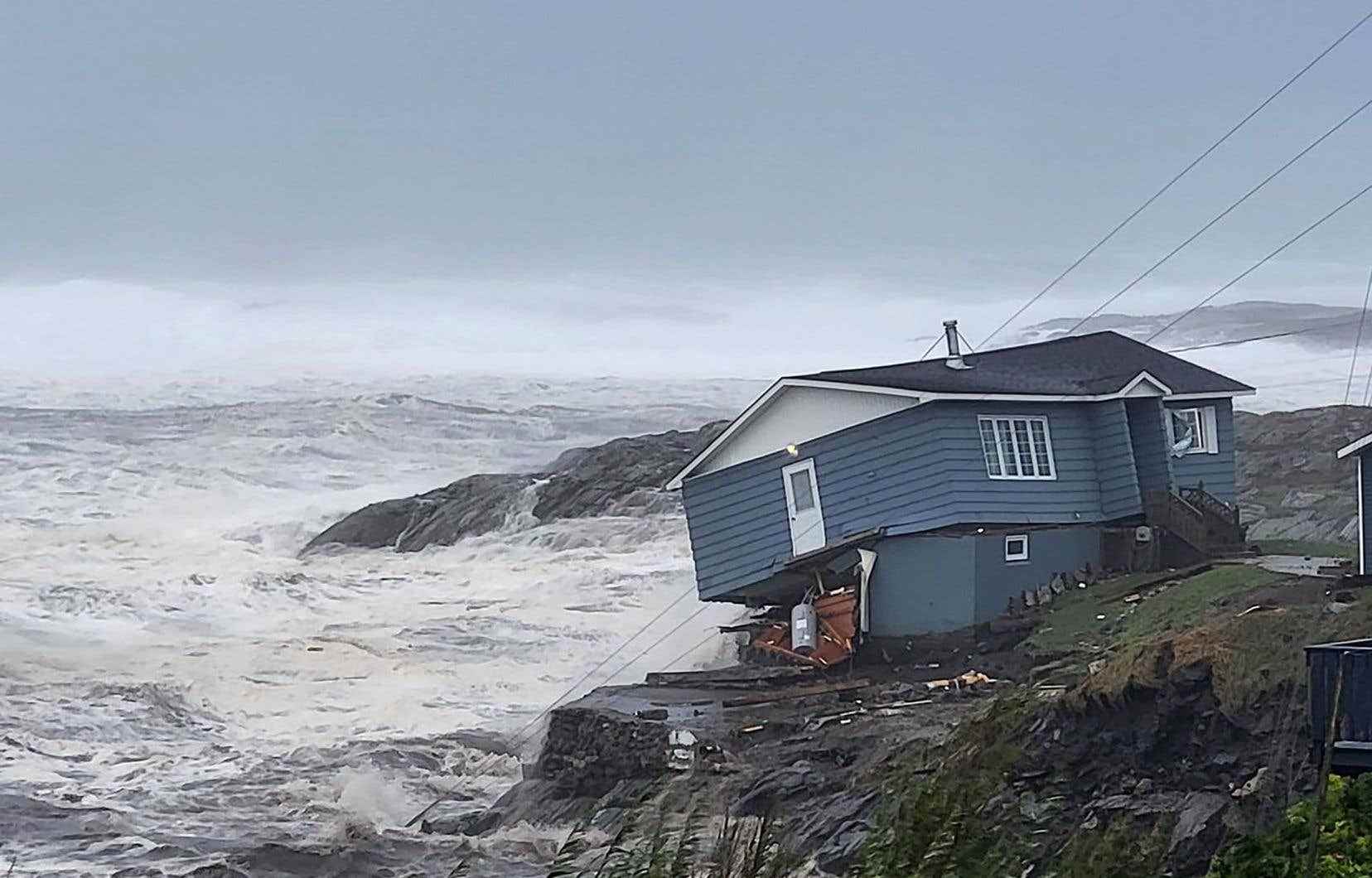François Legault will once again put on his Prime Minister’s clothes on Monday. During a visit already planned as part of his election campaign, he must go to the Îles-de-la-Madeleine, where he will be able to see the damage caused by the post-tropical storm. Fiona. The winds and waves damaged and even destroyed hundreds of buildings throughout the Atlantic regions.
The Minister of Public Security, Geneviève Guilbault, went to the Magdalen Islands on Sunday morning to take stock of the situation. The damage toll is not yet quantified, but 37 people had to be evacuated. “There were no deaths. There were no injuries, she said. It’s always the main thing to make sure people are safe. The road network in the Îles-de-la-Madeleine was restored last night as well. […] It could have been worse. »
Quebec will compensate homeowners who were not insured. To do so, they will have to contact the Ministry of Public Security, on its website or by telephone. An exceptional office must also be set up on the Islands in the coming days. However, this assistance program only covers primary residences.
Parti Québécois leader Paul St-Pierre Plamondon also returned to the Magdalen Islands on Monday — a far from routine trip for politicians due to the distance from the rest of Quebec.
There were no deaths. There are no casualties. […] It could have been worse.
He will be welcomed by his candidate and outgoing deputy, Joël Arseneau. “We are going to follow up very closely to ensure that the victims will be compensated quickly. You know it: in the case of other disasters like these, for some victims, it has turned into a nightmare because the compensation [étaient] extremely slow,” he observed on Sunday. Québec solidaire and the Conservative Party of Québec will not go there.
Politically, the CAQ and the PQ are engaged in a constant battle in the riding of Îles-de-la-Madeleine.
According to poll aggregation site Qc125.com, the two teams are one percentage point apart.
The calm after the storm
Storm Fiona blew with “sustained” winds of 80 km/h peaks between 90 and 120 km/h. A gust of 171 km/h was even recorded by Environment Canada in Nova Scotia.
The biggest waves on the Gulf of St. Lawrence generally reached between 4 and 6 meters. Waves of 10 meters were measured east of Gaspésie. Some wave peaks have been measured at 16 meters.
After this storm, the sun returned to the sky in the east of the country. A little everywhere, Sunday, one busied oneself with noting the extent of the disaster. Two deaths were listed by the authorities, one in Newfoundland and the other in Nova Scotia.
In the Îles-de-la-Madeleine, these waves submerged the docks in several places, damaging several boats. The sudden flood of water destroyed dozens of buildings. In Havre-Aubert, in particular, the coastline was completely submerged. Almost all the riverside residences were thus flooded. The winds also tore off part of the roof of the heritage church of Saint-Pierre-de-La Vernière, in L’Étang-du-Nord. No major damage is to be deplored on municipal buildings, which will be open on Monday morning.
One of the two undersea telecommunications cables between the archipelago and the mainland was broken. The second link, however, held firm, which allowed the Madelinots to remain constantly in direct communication with the rest of Quebec.
Eastern Gaspésie also suffered heavy damage. Chateau Dubuc in Chandler was engulfed by waves on Saturday. The heritage building was already in poor condition from previous storms. The officials of Patrimoine Gaspésie had already sounded the alarm about the imminent destruction of this building built in 1916.
Southwestern Newfoundland was particularly devastated. The waters gutted at least twenty houses in the municipality of Port-aux-Basques. Its mayor, Brian Button, has compared his village on the Internet to a “total war zone”. Hundreds of area residents had to be evacuated and taken to shelter.
Prince Edward Island also saw the extent of the destruction on Sunday. Countless homes, businesses and wharves were badly damaged. The government announced that schools would be closed on Monday and Tuesday in the province. Approximately 200 people had to be evacuated from Cape Breton Island.
The Lower North Shore was shaken, but spared. “We had prepared, and in the end we had especially strong winds. We had no more damage than during a fall storm,” observed Karine Monger, director general of the local MRC.
At the end of the day on Sunday, nearly 340,000 customers in the Maritimes were without power and practically all the citizens of Prince Edward Island were without power for the second day in a row.
However, electricity had returned to almost all the homes in the Magdalen Islands on Sunday afternoon. The state of emergency was lifted there at 6:30 p.m.
The army as reinforcements
Hundreds of members of the Canadian Armed Forces had begun on Saturday to deploy in the Atlantic provinces to help the disaster victims. The soldiers will help in the coming days to remove the debris and then repair the destroyed bridges and roads while technicians work to restore the electricity network.
“Everyone is pitching in,” Defense Minister Anita Anand said at a press conference on Sunday.
These reinforcements were not necessary in Quebec.
The federal government will also match all donations made to the Red Cross to help those affected by the storm. Fiona.
Prime Minister Justin Trudeau has said he is canceling his planned visit to Japan to monitor developments. He should be on the pitch in the next few days.
With François Carabin, Alexandre Robillard and The Canadian Press
